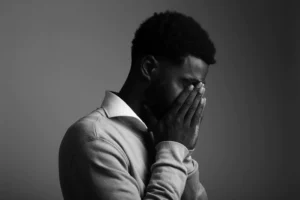Lashing out at those who hurt us is our tendency, and in popular media that often means striking against evil and wielding intellectual prowess, harsh words, technology, physical weapons or even fists against threatening foes (“Hulk smash” isn’t referring to pumpkins, after all). Even Jesus’ disciples had similar thoughts about how they should react to their enemies — Peter did, anyway, when he lashed out with a sword against one of Jesus’ captors. But Jesus said to him, “Put your sword back into its place; for all who take the sword will perish by the sword” (Matthew 26:52).
The Bible is full of stories about violent acts done in God’s name, but Jesus presents an alternative during His stay on earth: acting as a healer rather than a warrior. Though He did demonstrate a time for action when He overturned the tables of the money changers for their commercial activities (Matthew 21:12-17), His life in the Gospels generally promotes peace, patience and a love for others.
Fictional media that offers peaceful alternatives to violence inspires me, and here are some of my favorite characters who represent this choice.
1. Aang from “Avatar: The Last Airbender”
As the show got closer to the finale, Aang struggled more and more with the idea of killing Fire Lord Ozai to bring peace to the four nations. Ozai had done horrendous evil, and his existence threatened all of humanity. Everyone — including past Avatars — were telling Aang that Ozai needed to be destroyed for the good of all. They’re projecting an idea that Aang should sacrifice his own spiritual needs for the greater good. But Aang, struggling with his own ideas of morality, refused to kill the Fire Lord, even when he had the opportunity to do so. He found another way — using his Avatar abilities to remove Ozai’s bending, which rendered Ozai harmless. The show challenged the kill-or-be-killed fantasy trope.
2. Chara from “Undertale”
Depending on how you play the game, Chara can make it through the Underground without harming a single monster — she can talk her way out of battles and befriend them. Sometimes this means taking some hits from characters who don’t understand why she won’t fight. Other times, it means setting aside her preconceptions about “monsters” and recognizing their humanity. The most endearing characters in the game (i.e. all of them) become companions during the adventure instead of foes, and Chara’s life has more meaning because of these forged relationships.
3. The Doctor from “Doctor Who”
The Doctor is known for giving militant alien races a chance at life — even if they don’t seem to deserve it. Though his recent incarnations are decidedly less pacifist than previous ones, he is constantly looking for alternatives to fighting. In the episode “Fear Her,” he took pains to understand why an alien life-form had taken over a child, instead of automatically considering how to destroy it. The alien was lonely, used to living with thousands of brothers and sisters, and wanted companionship. The Doctor repaired its pod, and it peacefully left the girl and returned to its family in space.
4. Rey from “Star Wars: The Last Jedi”
In “The Force Awakens,” Rey hated Kylo Ren. “You’re a monster,” she said to him, and his murder of Han Solo seemed to solidify her loathing. Yet she’s willing to move toward reconciliation in “The Last Jedi” when she realized he’s conflicted. Kylo was manipulating her, and perhaps she was naïve to believe his change of heart. Still, she saw an alternative to war and attempted to take it.
5. Garrus Vakarian from “Mass Effect 2”
Wanting revenge, Shepard’s friend Garrus is determined to kill Sidonis, the turian responsible for his teammates’ deaths. Garrus lined up the shot with his sniper rifle while Shepard talked to Sidonis. But Shepard learned that Sidonis regrets his actions and the memory of what he did haunts him. So Shepard faces a choice: step aside and let Garrus kill him or persuade Garrus to let him go free. Shepard can opt for mercy (depending on the player’s choice), which seems to begin a healing process in Garrus. This side story in “Mass Effect 2” is a testament to how violence can affect the person who’s dishing it out as much as the one on the receiving end — Sidonis is so affected by his own act of betrayal that staying alive to face his actions is justice in itself and perhaps something good can come from his repentance in the future.
I appreciate that these characters demonstrate a desire to understand the humanity of others. They engage in a world of gray, where motives aren’t always what they seem and reconciliation is valued (which we can also see as a step to becoming more Christ-like). If an eye for an eye makes the whole world blind, perhaps searching out peaceful alternatives is worth the effort.
Copyright 2018 Allison Barron. All rights reserved.












